Venice: A Tapestry of Timeless Architecture
Explore the stunning architecture of Venice on this free walking tour, where history and design intertwine in every corner of this enchanting city.
Time
3 Hours
Stops
9 Places
Distance
5.1 km
St. Mark's Basilica (Basilica di San Marco)
This iconic church is a masterpiece of Byzantine architecture and a must-see for its opulent design and the stunning mosaics that adorn its interior.

St. Mark's Basilica (Basilica di San Marco) (Source: Google Maps)
St. Mark's Basilica is a stunning example of Byzantine architecture, renowned for its opulent design and magnificent mosaics that tell stories from the Bible. Constructed in the 11th century, it serves as the cathedral of Venice and is dedicated to the city's patron saint, St. Mark. The basilica's facade features intricate carvings and golden mosaics, reflecting the wealth and artistic prowess of the Venetian Republic. Inside, visitors are greeted by a breathtaking array of golden mosaics that date back to the 13th century, depicting biblical scenes and saints. The basilica's five domes are inspired by the Hagia Sophia in Istanbul, showcasing the influence of Eastern architecture on Venetian style. A visit to St. Mark's Basilica offers a glimpse into the spiritual and cultural heart of Venice, making it a must-see for anyone exploring the city's rich architectural heritage.
Bridge of Sighs (Ponte dei Sospiri)
Connecting the Doge's Palace to the prisons, this enclosed bridge is an architectural gem and offers a poignant glimpse into Venice's past.
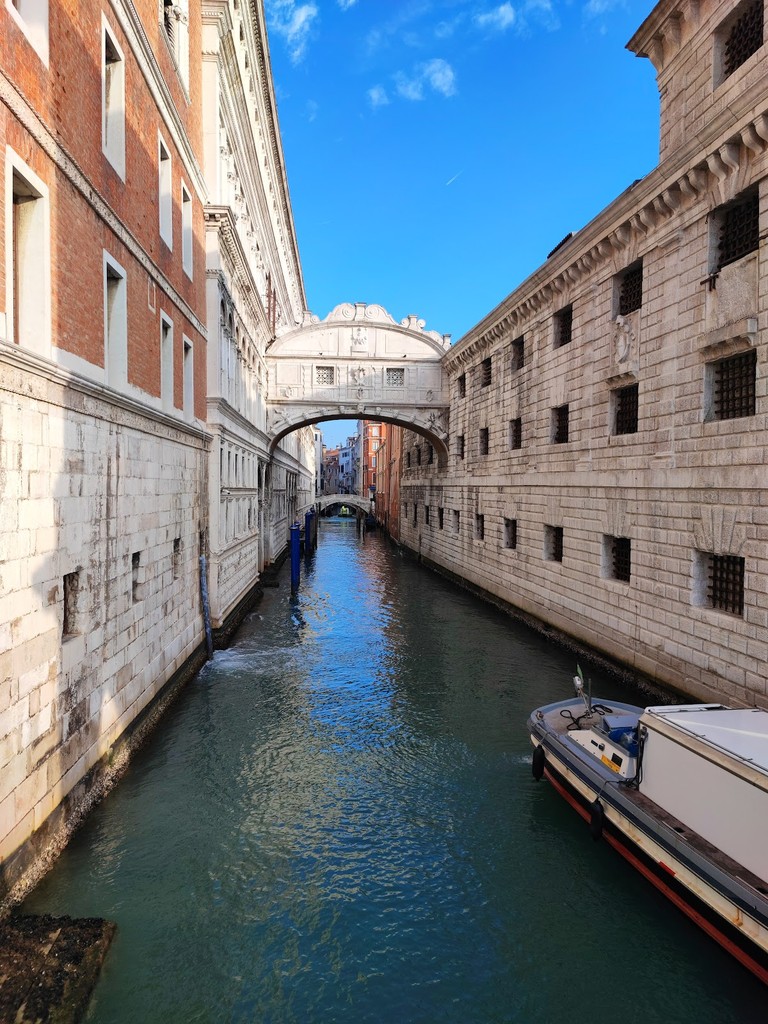
Bridge of Sighs (Ponte dei Sospiri) (Source: Google Maps)
The Bridge of Sighs is an architectural gem that connects the Doge's Palace to the prisons, serving as a poignant reminder of Venice's judicial history. Built in the early 17th century, this enclosed bridge is made of Istrian stone and features beautiful Baroque-style windows. The name 'Bridge of Sighs' is believed to have originated from the sighs of prisoners who, upon crossing the bridge, would take one last look at the beautiful city before facing their sentences. The bridge is a symbol of the contrast between the splendor of Venice and the darker aspects of its past, reflecting the city's complex history. Its design, with its elegant arches and intricate stonework, is a testament to the craftsmanship of the time. Today, the Bridge of Sighs remains one of the most photographed landmarks in Venice, drawing visitors who seek to understand the stories behind its walls.
Doge's Palace (Palazzo Ducale)
Adjacent to St. Mark's Basilica, the Doge's Palace is a stunning example of Venetian Gothic architecture and offers insight into the political history of Venice.
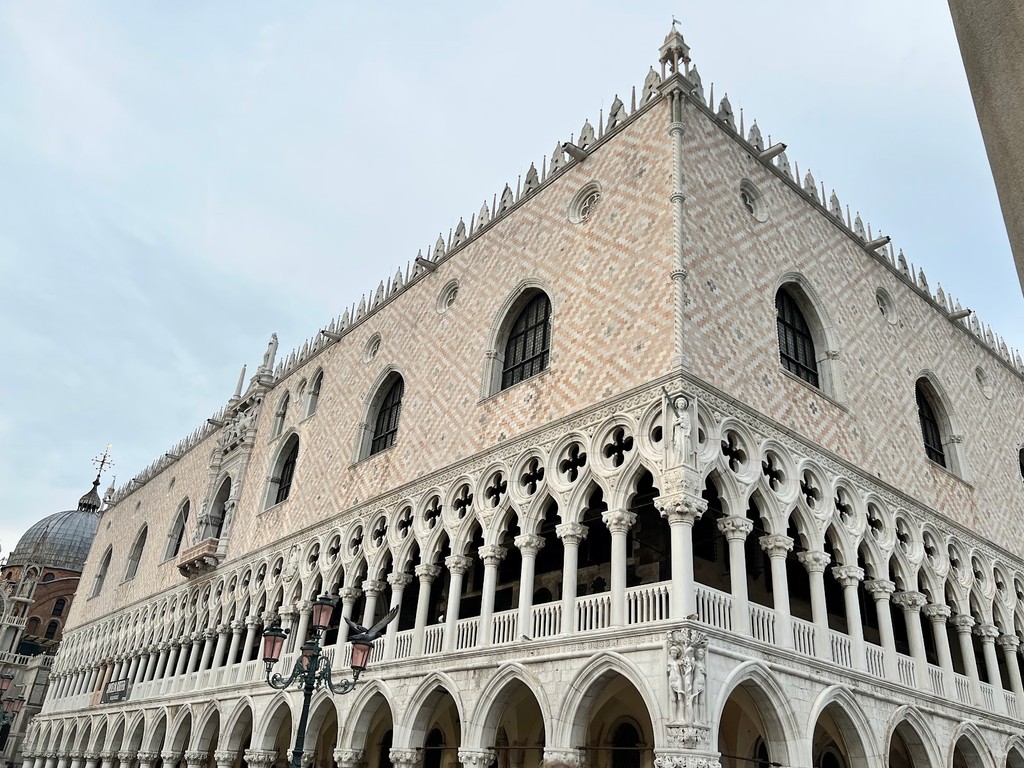
Doge's Palace (Palazzo Ducale) (Source: Google Maps)
Doge's Palace stands as a magnificent example of Venetian Gothic architecture, showcasing the political power and artistic achievements of the Venetian Republic. Built in the 14th century, the palace served as the residence of the Doge, the chief magistrate of Venice, and the seat of government. Its façade is adorned with intricate carvings and a series of pointed arches, reflecting the influence of Byzantine and Moorish styles. Inside, the palace boasts opulent rooms filled with stunning frescoes and artworks by renowned artists like Tintoretto and Veronese. The Great Council Hall, with its majestic ceiling and grand decor, is particularly noteworthy. The palace's architecture tells a story of Venice's rich history, where art and politics intertwined. A visit to Doge's Palace provides insight into the governance and culture of one of the most powerful maritime republics in history.
Church of San Zaccaria (Chiesa di San Zaccaria)
A beautiful blend of Gothic and Renaissance styles, this church is known for its impressive facade and the masterpieces within, including a Giovanni Bellini altarpiece.
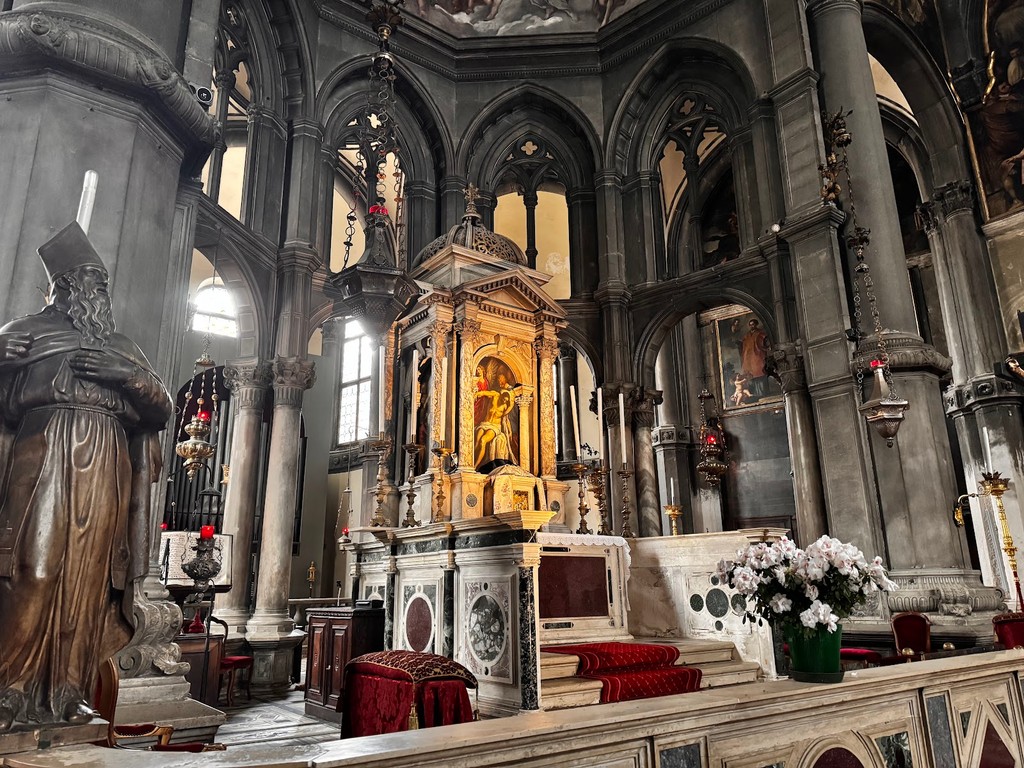
Church of San Zaccaria (Chiesa di San Zaccaria) (Source: Google Maps)
The Church of San Zaccaria is a remarkable blend of Gothic and Renaissance architectural styles, known for its stunning façade and impressive interior art. Built in the 15th century, the church houses a collection of masterpieces, including the renowned altarpiece by Giovanni Bellini, which illustrates the Virgin and Child with Saints. The church's façade features intricate stonework and a beautiful rose window, drawing visitors into its serene atmosphere. Inside, the main altar and side chapels are adorned with exquisite paintings and sculptures that reflect the artistic heritage of Venice. The church also serves as a burial site for several prominent figures, adding to its historical significance. San Zaccaria stands as a testament to the artistic and spiritual legacy of Venice, making it a must-visit for those interested in the city's architectural and cultural richness.
Arsenale di Venezia
Once the heart of Venice's naval power, the Arsenale showcases impressive medieval architecture and is a testament to Venice's maritime prowess.
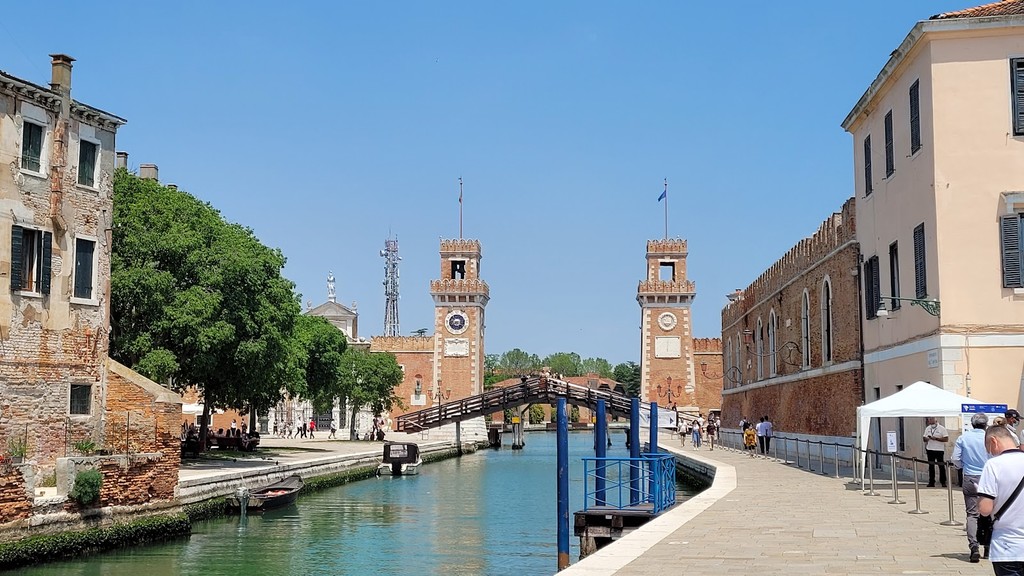
Arsenale di Venezia (Source: Google Maps)
The Arsenale di Venezia is a historic complex that once served as the heart of Venice's naval power, showcasing impressive medieval architecture and engineering. Established in the 12th century, the Arsenale was a shipyard and armory that played a crucial role in the city's maritime dominance. The site's architecture features large brick buildings and imposing gates, reflecting the military and industrial might of Venice during its peak. It was here that ships were constructed and outfitted for battles and trade, contributing significantly to Venice's wealth and influence. The Arsenale's unique design allowed for the rapid assembly of ships, a revolutionary concept at the time. Today, the site hosts various cultural events and exhibitions, preserving its historical significance while providing insight into the maritime history of Venice. A visit to the Arsenale offers a fascinating glimpse into the engineering prowess and naval history that shaped the city.
Ristorante Al Covo
A short walk from the Arsenale, this renowned restaurant offers a taste of authentic Venetian cuisine, perfect for a midday break.
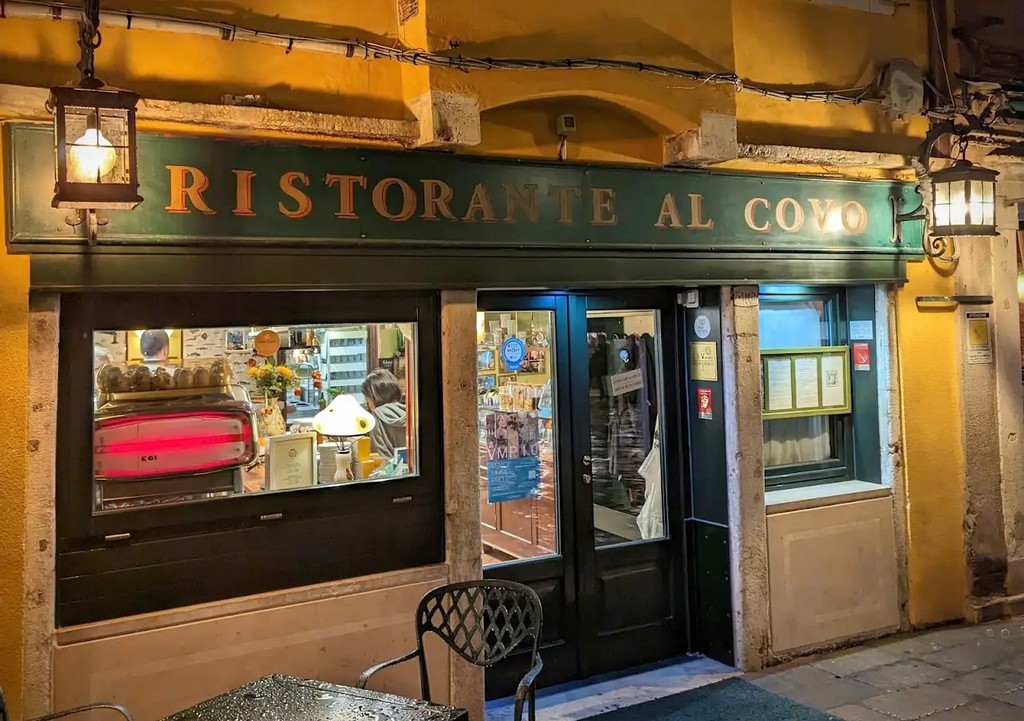
Ristorante Al Covo (Source: Google Maps)
Basilica dei Santi Giovanni e Paolo (San Zanipolo)
This massive Gothic church is the resting place of many doges and is celebrated for its impressive architecture and historic significance.
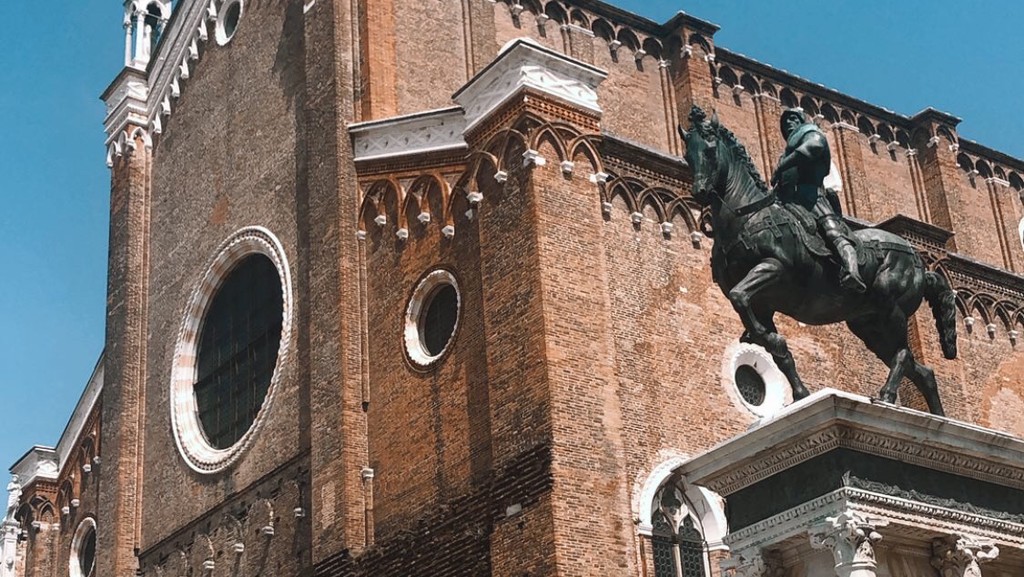
Basilica dei Santi Giovanni e Paolo (San Zanipolo) (Source: Google Maps)
The Basilica dei Santi Giovanni e Paolo, known as San Zanipolo, is a monumental Gothic church that serves as the final resting place for many doges of Venice. Constructed in the 13th century, the basilica is celebrated for its impressive architecture, featuring a grand façade adorned with intricate sculptures and a stunning rose window. Inside, visitors are greeted by a vast interior filled with beautiful chapels, each housing significant artworks and tombs of notable figures. The church is particularly famous for its altarpiece by Giovanni Bellini, which depicts the Virgin and Child surrounded by saints. San Zanipolo's historical significance is underscored by its role as a burial site for the city's leaders, making it a symbol of Venice's political and religious heritage. The basilica's architecture and art reflect the wealth and devotion of the Venetian Republic, offering a profound insight into the spiritual life of the city.
Ca' d'Oro
Known as the 'Golden House,' this palazzo is a stunning example of Venetian Gothic architecture and houses an art museum with a remarkable collection.

Ca' d'Oro (Source: Google Maps)
Ca' d'Oro, or the 'Golden House,' is a stunning example of Venetian Gothic architecture, renowned for its intricate façade and artistic heritage. Built in the 15th century, this palazzo features ornate decorations, including delicate marble inlays and pointed arches that exemplify the elegance of Venetian design. The name 'Ca' d'Oro' comes from the original gold leaf embellishments that adorned its exterior, although much of this has faded over time. Today, the palazzo houses the Galleria Giorgio Franchetti, an art museum showcasing a remarkable collection of Renaissance paintings and decorative arts. The museum's highlights include works by artists such as Titian and Carpaccio, providing a glimpse into the artistic achievements of the era. Visiting Ca' d'Oro allows guests to appreciate not only the architectural beauty of the building but also the rich cultural legacy of Venice through its art collection.
Campo del Ghetto Nuovo
End the tour at this historically significant square, which is part of the Jewish Ghetto of Venice, offering an intriguing blend of culture and history.
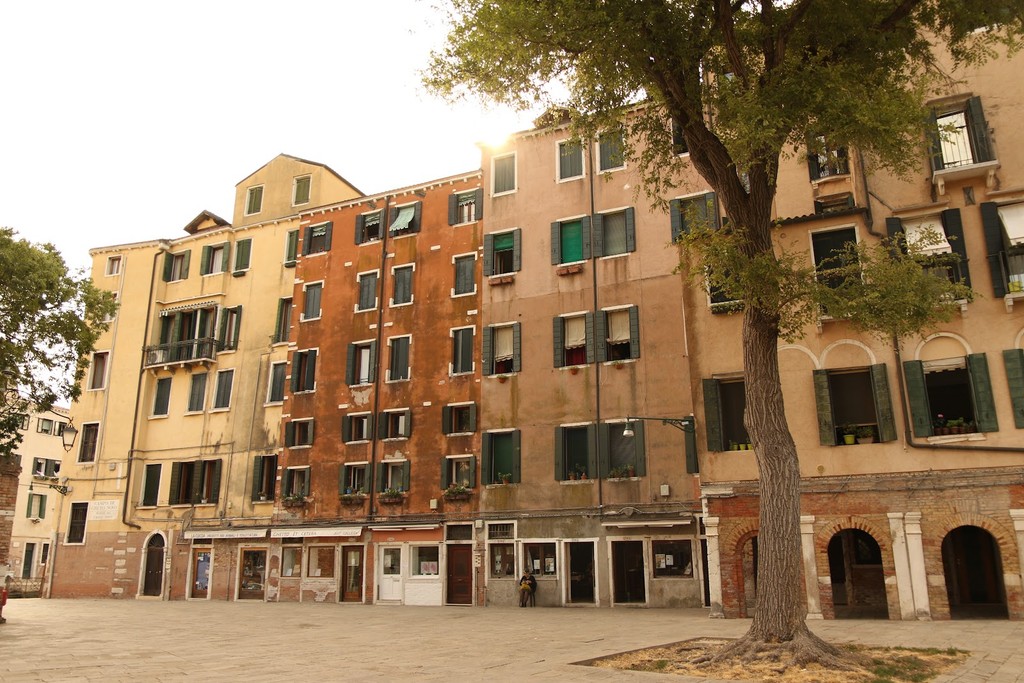
Campo del Ghetto Nuovo (Source: Google Maps)
Campo del Ghetto Nuovo is a historically significant square that is part of the Jewish Ghetto of Venice, offering visitors a unique blend of culture and history. Established in the 16th century, the ghetto was the first of its kind in Europe, where Jews were required to live and work. The area is characterized by its narrow streets, quaint shops, and synagogues, reflecting the vibrant Jewish community that has thrived in Venice for centuries. The square itself is surrounded by beautiful buildings, including the historic Great Synagogue, which showcases a blend of architectural styles. The ghetto serves as a poignant reminder of the city's complex history, including periods of both tolerance and persecution. Today, Campo del Ghetto Nuovo is a place of remembrance and cultural exchange, where visitors can learn about the rich heritage and contributions of the Jewish community to Venice's history. A visit to the ghetto offers a profound understanding of the city's diverse cultural landscape.

Your travels, your rules.
Create your own Free Walking Tours.
Set your preferences, distances and anything you want to do or see.
Completely free, no payment required.